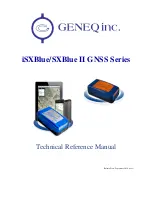
Theory of Operation (Cont.)
Theory of Operation (Cont.)
12
RDR-1600 Pilot’s Guide
TM106101(8/01)
TM106101(8/01)
RDR-1600 Pilot’s Guide
13
5.3 WEATHER RADAR PRINCIPLES
Airborne weather avoidance radar, as its name implies, is for avoiding
severe weather – not for penetrating it. Whether to fly into an area of radar
echoes depends on echo intensity, spacing between the echoes, and the
capabilities of both pilot and aircraft. Remember that weather radar detects
only precipitation drops; it does not detect minute cloud droplets. Therefore,
the radar scope provides no assurance of avoiding instrument weather in
clouds and fog. Your indicator may be clear between intense echoes; this
clear area does not necessarily mean you can fly between the storms and
maintain visual sighting of them.
The geometry of the weather radar radiated beam precludes its use for
reliable proximity warning or anti-collision protection. The beam is charac-
terized as a cone-shaped pencil beam. It is much like that of a flashlight or
spotlight beam. It would be an event of chance, not of certainty, that such a
beam would come upon another aircraft in flight.
WARNING
Weather radar is not practical as a pilot operable collision
avoidance system. Weather analysis and avoidance are the
primary functions of the radar system.
5.2 RADAR PRINCIPLES
Radar is fundamentally a distance measuring system using the principle of
radio echoing. The term RADAR is an acronym for Radio Detecting And
Ranging. It is a method for locating targets by using radio waves. The trans-
mitter generates microwave energy in the form of pulses. These
pulses are then transferred to the antenna where they are focused into a
beam by the antenna. The radar beam is much like the beam of a flashlight.
The energy is focused and radiated by the antenna in such a way that it is
most intense in the center of the beam with decreasing intensity near the
edge. The same antenna is used for both transmitting and receiving. When
a pulse intercepts a target, the energy is reflected as an echo, or return
signal, back to the antenna. From the antenna, the returned signal is trans-
ferred to the receiver and processing circuits located in the receiver
transmitter unit. The echoes or returned signals are displayed on an
indicator.
Radio waves travel at the speed of 300 million meters per second and thus
yield nearly instantaneous information when echoing back. Radar ranging
is a two-way process that requires 12.36 micro-seconds for the radio wave
to travel out and back for each nautical mile of target range. As shown in
the distance illustration in Figure 5.2-1, it takes 123.6 micro-seconds for a
transmitted pulse of radar energy to travel out and back from an area of
precipitation 10 nautical miles away.
Figure 5.2-1. Radar Transmit-Receive Timing









































